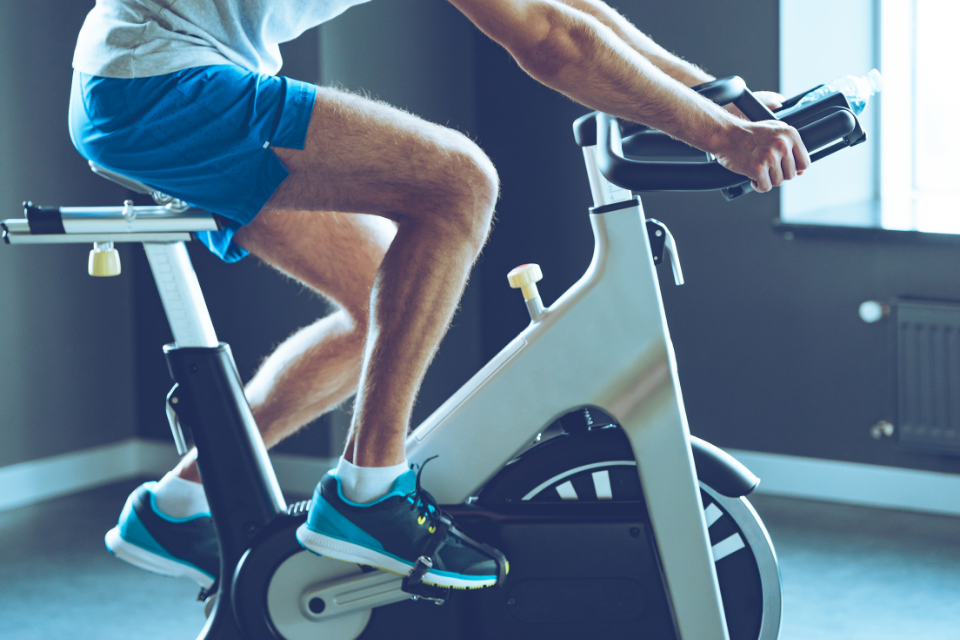Cardio
Cardio exercise is any rhythmic activity performed continuously and can include activities like walking, running, aerobics, cycling, swimming, and dancing. Cardio strengthens the heart and lungs, increases endurance and burns calories.
Strength Training
Strength training works in a different way than cardio and is equally important for good health and weight loss. With strength training, you lift weights (dumbbells, barbells, kettlebells, resistance bands, machines, etc.) to strengthen the muscles, bones, and connective tissue. Strength training builds lean muscle tissue, which raises metabolism helping you to reduce body fat provided the calorie intake is kept in line. If you are new to resistance exercise and intimidated by using weights, bodyweight exercises like squats, pushups and planks are a great way to start.
Flexibility
While stretching is often the most overlooked exercise, it’s important for keeping us agile as we get older. And, unlike the rigors of cardio and strength training, it’s relaxing and it feels good.
Stretching can be done anytime throughout the day, it’s also important to stretch after your workouts, especially if you have any chronically tight areas.
The guidelines for stretching are
- Stretch your muscles when they’re warm (after your warm-up or, even better, after your workout).
- Do static stretches with a focus on tight areas, such as the hamstrings and lower back.
- Stretch a minimum of two to three days a week. Even better would be every day.
- Stretch within your range of motion. Stretching shouldn’t hurt.
- Hold each stretch for about 15 to 30 seconds and do two to four reps of each stretch.
- Yoga workouts are a great way to both stretch your body at the same time you build endurance and promote relaxation and stress-reduction
Warm up with stretches—active movements that warm and flex the muscles you’ll be using, such as leg kicks, walking lunges, or arm swings
Cool down after your workout– it’s important to take a few minutes to cool down and allow your heart rate to return to its resting rate. A light jog or walk after a run, or some gentle stretches after strength exercises can also help prevent soreness and injuries.
Drink plenty of water– Your body performs best when it’s properly hydrated. Failing to drink enough water when you are exerting yourself over a prolonged period, especially in hot conditions, can be dangerous.
Listen to your body. If you feel pain or discomfort while working out, stop! If you feel better after a brief rest, you can slowly and gently resume your workout. But don’t try to power through pain. That’s a sure shot recipe for injury.
Rest and Recovery
While we often focus on getting in as much exercise as possible, rest and recovery are also essential for reaching your weight loss and fitness goals. While you can often do cardio every day (though you may want to rest after very intense workouts), you should have at least a day of rest between strength training workouts.
Make sure you don’t work the same muscles two days in a row to give your body the time it needs to rest and recover.
Finding Motivation
While it’s important to know basic exercise guidelines and principles, the most important step in starting an exercise routine is exploring the idea of motivation. Without that, all the advice in the world won’t do you any good.
It’s important to remember that motivation doesn’t just happen. It is something you make happen each and every day. If you have multiple reasons to exercise, you’ll always have something to get you moving, even when motivation is hard to come by. The hardest part of exercise is getting started. If you can get that far, you’ve won half the battle.

































